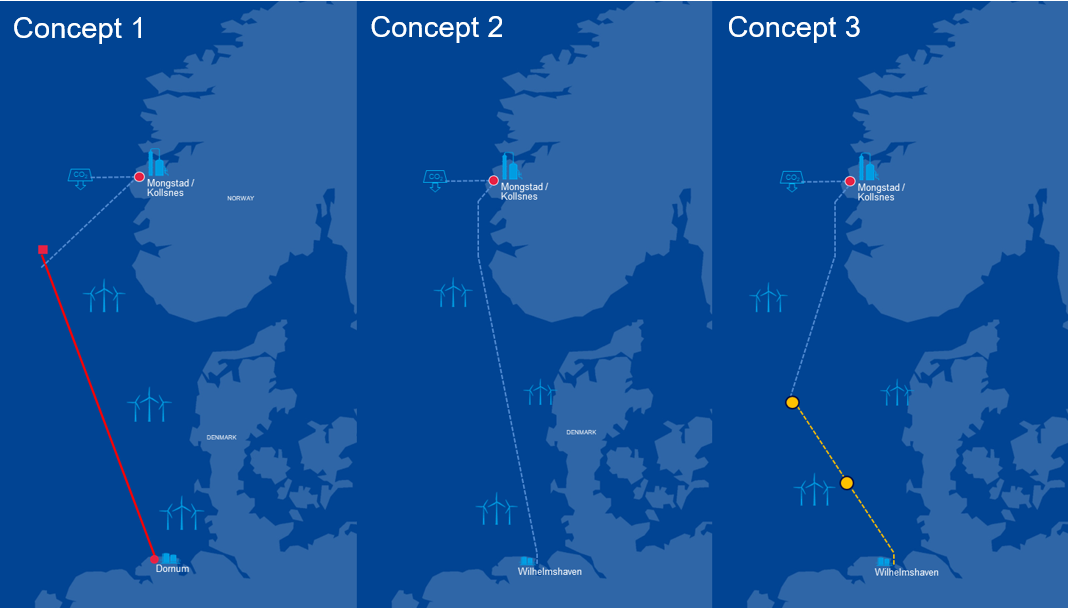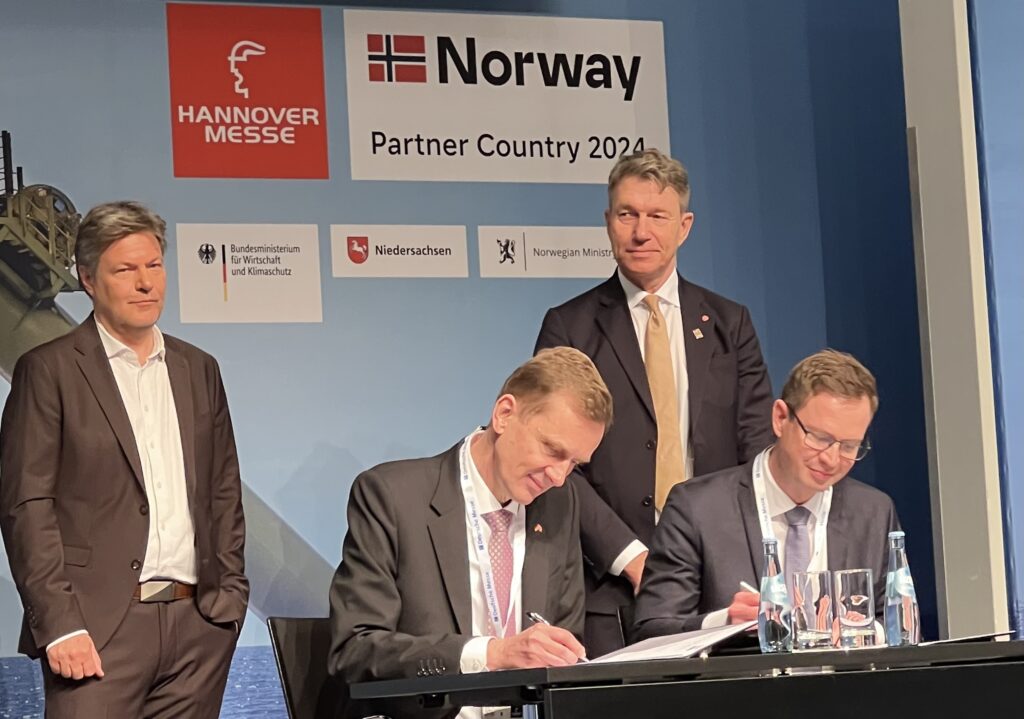
The design of the hydrogen transport infrastructure is under evaluation and will either be based on (1) a partially new- and-partially repurposed natural gas offshore pipeline, (2) a completely new offshore pipeline and (3) a new pipeline that is connected to the Aquaductus pipeline in the German sector. The project also includes an onshore receiving terminal at the exit point of the pipeline.
The maximum transport capacity of the hydrogen pipeline infrastructure is up to 18 GW (4 million tons) of hydrogen per year. This hydrogen pipeline infrastructure will allow low-carbon and renewable hydrogen produced in the North and Norwegian Sea Basins to directly connect to the transport pipeline and make use of the available transport capacity.
The CHE pipeline project is part of the H2 Offshore Transport (H2T) project. The purpose of the H2T project is to establish an offshore pipeline infrastructure for transport of hydrogen to Germany. The H2T project is part of the Germany and Norway Energy cooperation – joint feasibility study that has been conducted by Gassco and Dena.
The CHE pipeline project is also part of the CH2-4EU PRJ group included in the updated 2022 TYNDP.
German – Norwegian cooperation on hydrogen
The CHE project is part of German-Norwegian cooperation on hydrogen, and the and Joint Feasibility Study performed by Gassco and dena.

Transport Concepts
The project currently has 3 concepts under review :

Concept 1
New 360 km 40’’ offshore pipeline from the West coast of Norway to Draupner with the expected maximum transport capacity of 9 GW. The new pipeline will be tied into the Existing Europipe pipeline, which will be disconnected from the natural gas network and re-qualified for hydrogen transport. Europipe will also be disconnected from the existing receiving terminal in Dornum and connected to a new receiving terminal for hydrogen in the same area. Europipe is approximately 600 km long and 40’’ in diameter. The capacity of this concept is pending confirmation from DNV, due to ongoing evaluations of Europipe, but is expected to be in the range 8 to 18 GW.
Concept 2
New 937 km 40’’ offshore pipeline from the West coast of Norway to a new built receiving terminal in the Wilhelmshaven area. The capacity of this concept is 18 GW.
Concept 3
New 600 km 40’’ offshore pipeline from the West coast of Norway to tie-in point to Aquaductus at the entry to the German EEZ (Aquaductus phase 2). From this point the hydrogen will be transported to a new built receiving terminal in the Wilhelmshaven area. The capacity of the pipeline from Norway to the Aquaductus tie-in point is 18 GW.

Gassco and GASCADE to cooperate on plans for hydrogen transport in the North Sea
In order to enable hydrogen transports between Norway and Germany, Gassco AS (Gassco) and GASCADE Gastransport GmbH (GASCADE) signed a memorandum of understanding with the aim to transport hydrogen via pipeline in the North Sea. The cooperation between the two network operators is embedded in a strategic partnership to find infrastructure solutions between Norway and Germany.
Project timeline with important milestones
The CHE pipeline project is currently on the following schedule:

Contact information
Julian Phillipp Hauk
Lead business developer, MMP Strategy and businesses development
[email protected] / +31 621 323 188
Project Technical Information and Cost Description
Download more information in your preferred language:

Projects of Mutual Interest (PMIs) are key cross-border energy infrastructure projects between the EU and non-EU countries, which contribute to the energy and climate policy objectives of the Union. This is a new category of projects that can be supported following the revision of the Trans-European Networks for Energy Regulation (TEN-E) in 2022.
The CHE pipeline project is included in the list as “9.25 Offshore hydrogen pipeline Norway – Germany [currently known as CHE Pipeline]” ( in the new list of EU energy Projects of Common and Mutual Interest (europa.eu) and part of CH2-4EU PRJ group included in the updated 2022 TYNDP from ENTSOG.
Date website last updated:
